Add and Subtract Fractions having the Same Denominator
When adding or subtracting fractions, consider the problem simple if the denominators are equal or the same. The rules are outlined below.
Steps on How to Add and Subtract Fractions with the Same Denominator
- To ADD fractions with like or the same denominator, simply add the numerators then copy the common denominator. Always reduce your final answer to its lowest term.
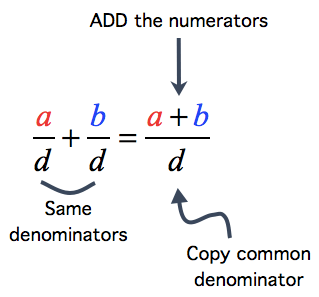
- To SUBTRACT fractions with like or the same denominator, just subtract the numerators then copy the common denominator. Always reduce your final answer to its lowest term.
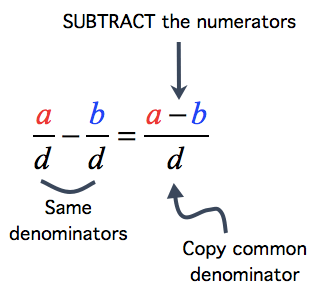
Examples of Adding and Subtracting Fractions with Like Denominator
Example 1: Add the fractions.

The denominators of the two fractions are both 7. Since they have the same denominator, we can easily add these fractions by adding their numerators and copying the common denominator which is 7.
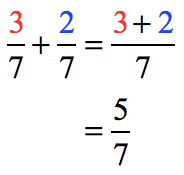
We can also show the addition process using circles.
- The first fraction [latex]\Large{3 \over 7}[/latex] can be represented by a circle divided equally into seven parts with three pieces shaded in red.

Observe: The numerator tells us how many areas are shaded while the denominator tells us how many equal parts the circle is divided.
- In the same manner, the second fraction [latex]\Large{2 \over 7}[/latex] looks like this:
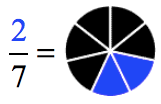
- Since the two circles are both divided into seven (7) equal parts, we should be able to overlap them. The new circle after addition has five (5) shaded regions which are the accumulation of both the red and blue pieces.
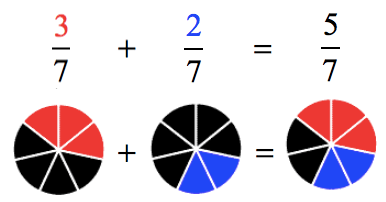
Example 2: Add the fractions.

Let’s combine these fractions using the addition rule. Again, add the numerators then copy the common denominator.
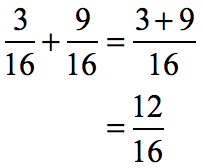
After you add fractions, always find the opportunity to simplify the result by reducing it to the lowest term. We can do so by dividing both the numerator and denominator by their greatest common divisor.
- Common divisor is a nonzero whole number that can evenly divide two or more numbers.
- Greatest Common Divisor (GCD) is the largest number among the common divisors of two or more numbers.
The numerator and denominator obviously have a common divisor of 2. However, is there a number larger than 2 that can also evenly divide both of them?
Yes, there is! The number 4 is the greatest common divisor of 12 and 16. Therefore, we will use this number to reduce the fraction to its lowest term.
Divide the top and bottom by the GCD = 4 to get the final answer.
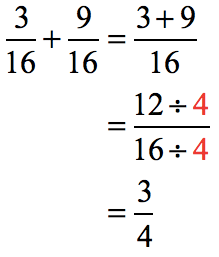
Example 3: Add the fractions.

Solution:
Since the denominators of the two fractions are equal, add the numerators and copy the common denominator.
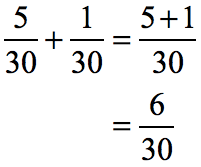
The top and bottom numbers of the fraction are divisible by 2 and 6. However, we always want the largest common divisor to reduce the fraction to its lowest term. Thus, the GCD = 6.
- Divide the top and bottom numbers by 6.
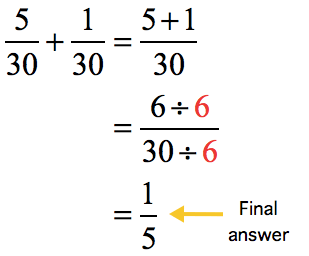
Example 4: Add the fractions.

Solution:
All three fractions have the same denominator. We will add as usual.
- Get the sum of the three numerators then copy the common denominator.
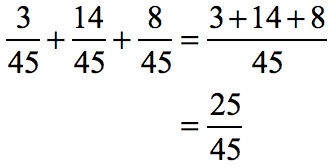
The greatest common divisor between the numerator and denominator is 5.
- Divide top and bottom by 5.
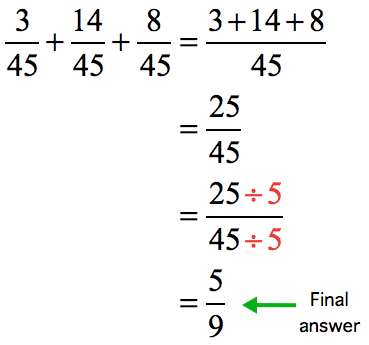
Example 5: Subtract the fractions.

This time around, we are going to subtract the numerators instead of adding them.
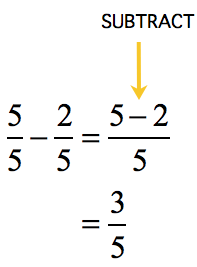
Looking at the result after subtraction, the only common divisor between the numerator and denominator is 1. Thus, the final answer remains as [latex]\Large{{3 \over 5}}[/latex]. Think about it, dividing the top and bottom by 1 won’t change the value of the fraction.
Suppose you have a green cake. And you cut it into 5 equal portions. This can be represented as a fraction which is [latex]\Large{{5 \over 5}}[/latex].
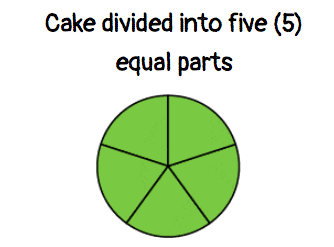
If you ate two slices of the cake ( [latex]\Large{- {2 \over 5}}[/latex] ), you should have three leftover pieces ( [latex]\Large{{3 \over 5}}[/latex] ).
The plate should look something like this.
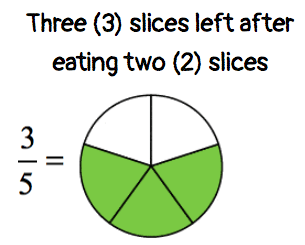
Example 6: Subtract the fractions.

The two fractions have the same denominator which means we should be able to easily subtract their numerators.
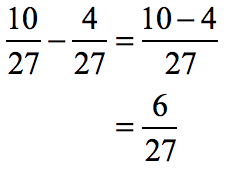
The answer can still be further simplified using a common divisor of 3. So, divide the numerator and denominator by 3 to reduce the fraction to its lowest terms.
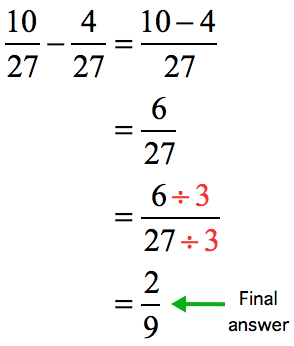
Example 7: Subtract the fractions.

Solution:
Since the denominators of the two fractions are equal, subtract their numerators then copy the common denominator.
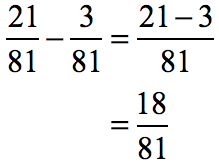
The numerator and denominator are divisible by 3 and 9. However, we always want the largest common divisor to reduce the fraction to its lowest term. Thus, the GCD = 9.
- Divide the top and bottom numbers by 9.
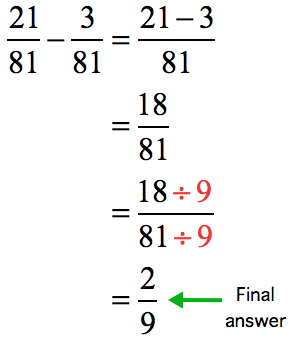
Example 8: Subtract the fractions.

Solution:
Subtract the numerators, copy the common denominator, and reduce the resulting fraction to its lowest term using the GCD = 11.
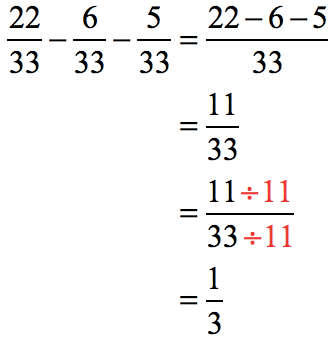
You may also be interested in these related math lessons or tutorials:
Add and Subtract Fractions with Different Denominators
Multiplying Fractions
Dividing Fractions
Simplifying Fractions
Equivalent Fractions
Reciprocal of a Fraction
